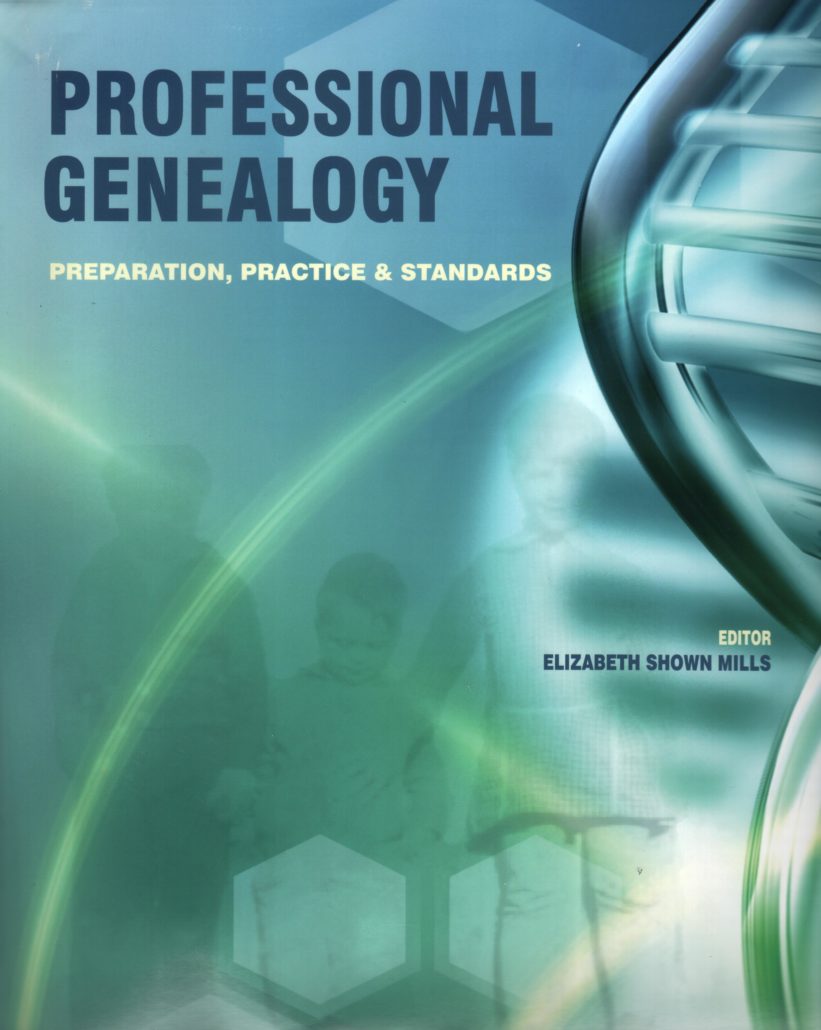
Assessing Genealogical Sources—Part 1
By Thomas W. Jones, Ph.D., CG, CGL, FASG
From time to time we have excerpted portions of the extraordinary book, Professional Genealogy: Preparation, Practice & Standards. Edited by Elizabeth Shown Mills, one of America’s most respected genealogy authorities, and written by eighteen leading experts on the substance of genealogical research, Progen PPS is a priceless collection of methodological guidance not just for professional genealogists but for anyone who takes research seriously.
“Assessing Genealogical Sources,” by Thomas W. Jones, Ph.D., the first of a two-part excerpt to be continued next week, comes from Chapter 12, “Reasoning from Evidence,” of Progen PPS.
“Sources are containers of information that may provide useful evidence. Assessing sources helps researchers validate—or invalidate—the evidence that a source’s information provides. The first step in evaluating sources is to determine whether its creator intended it to be a narrative, an original record, or a derivative record:
- Narratives draw content mostly from diverse prior sources. Most include conclusions, interpretations, and ideas that the underlying sources do not state. Narratives are authored, but the author may be unknown. A newspaper’s obituary, for example, may base an overview of a deceased person’s life on information from informants and prior news items. It might or might not show the writer’s name. Other examples of narratives include articles, family histories, lineage-society applications, research reports, and notes or transcriptions of interviews that provide hearsay along with the interviewee’s direct observations. Genetic reports are narratives when they compare or interpret test results.
- Records draw content primarily from actions, events, and utterances—matters that the records document, report, refer to, or memorialize. As a rule, records include few, if any, interpretations or conclusions. A newspaper death notice, for example, reports the facts of a death, creating a record of that event. Records include censuses (recording names, residences, and other details), deeds (recording land sales), depositions (recording sworn statements), tax rolls (recording tax assessments, payments, or both), and vital records (recording births, marriages, and deaths). Records usually appear in groups and subgroups—a household in a census volume or series of census volumes, a paper in a collection of court or pension files, or a will in a series of will books or probate packets. In evaluating records, genealogists assess facsimile images as if the images were the sources.
“Genealogists mentally categorize records into two subcategories.
- Original records, which represent an event’s first recording, regardless of whether it was made at the time or later, even decades afterward. Original records include artifacts (like gravestones and needlework), audio and video recordings, documents (like family and official records), and photographs. DNA samples and test results are genetic records. (Comparisons of DNA test results, however, are narratives.)
- Derivative records, which are transmutations of an original record. Derivatives include abstracts, keyboarded databases, indexes, transcriptions, and translations. Record images with hidden or modified information also are derivative records. Identifying a record as a derivative requires us to recognize what it may have been derived from, whether that record survives or not. Otherwise, the record likely is an original.
“Derivation processes add errors that original records do not contain. People creating derivatives do misread, misinterpret, and mistype. Abstractors and indexers omit information both intentionally and accidentally. Clerks preparing certificates for third parties can misread and mistype. Authors of narratives introduce errors and omissions by misinterpreting and abridging their source materials.
“Because genealogists need accurate information to form evidence, we prefer original records over derivatives and narratives. If the evidence we assemble to support a conclusion includes no evidence pulled from information in original records, our conclusion is unlikely to be convincing. The most-credible genealogical proofs are supported entirely, or nearly so, by original records.
“Many sources provide information of mixed evidentiary value. Therefore, we avoid characterizing materials as “primary sources” or “secondary sources.” Both terms give equal value to all information a source contains—higher for “primary” and lower for “secondary”—and thereby mislead the user. Applying “primary” and “secondary” to individual information items within a source, not to the source as a whole, yields a more precise and accurate assessment. It is more likely to produce reliable and useful evidence and conclusions.”
Excerpted from Thomas W. Jones, “Reasoning from Evidence,” Elizabeth Shown Mills, ed., Professional Genealogy: Preparation, Practice & Standards. (Baltimore: Genealogical Publishing Co., 2018), 265–92.




